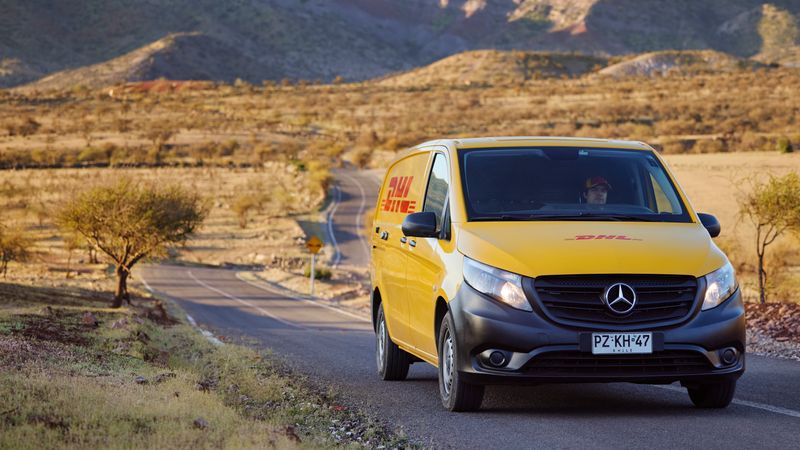Grow your business with the Discover newsletter
Logistics advice & insights straight to your inbox
Subscribe now
Cambodia's journey in the global rubber market began in the early 20th century with its inaugural rubber plantations. Since then, the nation's rubber industry has flourished, driven by worldwide demand and technological advancements in rubber production, according to an article by Khmer Times. Today, Cambodia is a pivotal player in the natural rubber sector, adeptly balancing global trade challenges and sustainability efforts. This blog explores the vibrant future of the country’s rubber industry, its ongoing innovations, and the opportunities ahead.
The global natural rubber market, essential for industries worldwide, is projected to grow steadily at a 4.20% compound annual growth rate (CAGR) through 2032 from its current volume of 14.4 million tonnes, according to a report by ChemAnalyst. This growth is driven by diverse applications, from automotive to manufacturing, reflecting the material's importance. Yet, this market faces volatility, with prices sensitive to geopolitical tensions, environmental factors, and changing demand patterns, including a notable shift towards eco-friendly products in response to increasing environmental awareness.
Within this complex landscape, Cambodia emerges as a critical contributor, leveraging its extensive rubber plantations to meet international needs. In 2022, the nation's rubber exports soared despite global market challenges, such as fluctuating Ribbed Smoked Sheets (RSS) 3 rubber prices, achieving a 28.3% increase to US$541.66 million, according to a report by Khmer Times.
Catering to major sectors such as China, Vietnam, Malaysia, Singapore, India, and the European Union, Cambodia's market engagement has allowed it to maintain steady export growth, accounting for 2.5% of the country's total in 2022, according to trade data released by Statista.
This ability to adapt to market demands and price volatilities highlights Cambodia's vital position in the international rubber supply chain.
Tackling the environmental, economic, and social challenges in Cambodia’s rubber industry is a complicated but crucial endeavour. The drive for rubber production has ecological repercussions, such as deforestation, land degradation, and biodiversity loss, due to the need for expansive plantations that often encroach on natural forests. This expansion not only disrupts local ecosystems but also contributes significantly to global climate change efforts.
On the economic side, the industry faces the volatility of rubber prices, deeply impacting the livelihoods of thousands. Fluctuations are largely driven by global demand and trade policies, leading to unpredictable income for both producers and workers. Moreover, the push for improved labour conditions and fair wages remains a pressing concern.
In addressing these issues, Cambodia's rubber industry has adopted a holistic sustainability approach. Strategic partnerships, such as those with World Wide Fund for Nature-Cambodia (WWF-Cambodia), promote practices that minimise environmental damage and enhance biodiversity. Complementing these efforts, the Cambodian Working Group for Sustainable Natural Rubber (WGSNR) has developed five guiding sustainability principles – Respecting People, Environmental Protection, Optimising Natural Resources, Enhancing Farm Productivity, and Good Governance – to steer the industry towards more sustainable practices.
Economically, Cambodia is taking steps to focus on enhancing rubber quality and sustainable agricultural practices to stabilise market prices and ensure farmer incomes, addressing sector-wide economic uncertainties.
Enhancing its rubber industry, Cambodia is expanding into specialised grades such as Standard Vietnamese Rubber (SVR) 10, 20, RSS, SVR 3L, and 5, targeting diverse manufacturing needs from high-quality tyres to medical devices. This diversification, crucial for tapping into new markets and revenue streams, aligns with sustainable growth objectives. A prime example of this strategy's success is the significant rubber exports to Vietnam, where local demand outstrips supply capabilities, earning Cambodia $888 million in 2023. Smoothly complementing this diversification, Vietnam's implementation of reduced tariffs on Cambodian rubber under Decree 5/2024/ND-CP enriches market stability and underlines the strategic benefits of Cambodia's multifarious rubber offerings in strengthening its global sector position, reinforcing the critical importance of innovation and market diversification.
The future of rubber in Cambodia, particularly through sustainable practices and product diversification, is expected to bolster the nation's rubber exports significantly. By meeting global demands and adhering to environmental standards, Cambodia can enhance the quality and variety of its rubber exports. This focus will likely open up new international markets, improve export revenue, and solidify Cambodia's reputation as a leading player in the global rubber industry, driving economic growth and sustainability.

In the quest to expand Cambodia's rubber market reach, efficient logistics and reliable global distribution are indispensable. Partnering with DHL Express ensures the seamless transportation of rubber products worldwide, leveraging our expertise in international shipping and delivery express services. This collaboration aids in overcoming logistical challenges, ensuring dependable global distribution, and fostering the industry's sustainable growth.
Open a business account today to harness these benefits and propel Cambodia's rubber exports to new heights, embracing the pivotal role of logistics in expanding market access and supporting diversified growth strategies.